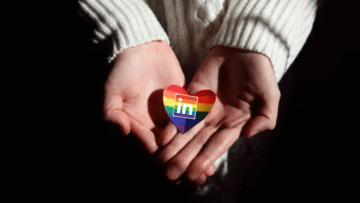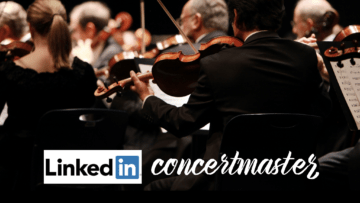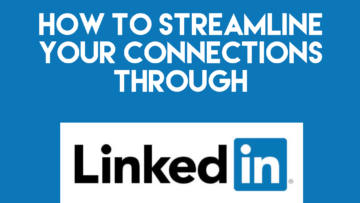If you have good content on your resume, could the same content make your LinkedIn shine? Yes! You can use the verbiage on a well-written resume on LinkedIn.
Where else would the content come from for your work experience?
However, LinkedIn is so much more than just your resume content. Last week in part one, I shared 14 carousels on Resume Strategies for 2023. In part two below, there are 26 tips for a LinkedIn profile.
- Have you customized your LinkedIn URL, or do you have a bunch of numbers and letters after your name? It takes less than 30 seconds to fix this. Here are some ideas on how to customize your URL. Your custom LinkedIn URL should be part of the header on your resume under your name and contact information.
- Have you created a personalized banner, or do you have the standard grayish-green banner? You can create a custom banner with the LinkedIn templates available on Canva or use another program to make the image 1584 x 396 (or a 4:1 ratio) to enhance your personal brand. The banner is a LinkedIn feature and is not part of a resume, but it should include what you do and not just be an image or something irrelevant or your metro city.
- Do you have a recent professional picture on your LinkedIn profile where you look friendly and charismatic? Did you know you can remove the background or add a more colorful background using PFPMaker with free software tools? Typically, you would not include a photo on a resume, at least in the United States.
- Did you know that on LinkedIn, you have up to 220 characters for a headline? You should also create a headline on your resume. The words PROFILE SUMMARY should not be at the top of a resume, just like they should not be at the top of your LinkedIn profile. However, you can analyze and improve your LinkedIn headline score.
- Have you included your email and phone number in the Contact Info section on your LinkedIn profile, just like you would on a resume? You should include that contact information at the bottom of your About section so people can reach out if you are not a first-level connection.
- Have you selected the closest major metropolitan area to you on LinkedIn, or did you choose the city where you reside, narrowing your reach? On a resume, I have seen people use their city or major metro area.
- Do you have over 500 first-level connections or more on LinkedIn? If you Google that, you will know why it’s important, but it has nothing to do with a resume.
- Have you turned on the Open to Work feature if you are a job seeker? You can wear the #opentowork green scarf making your job search visible to the public, or you can choose your candidacy to be visible only to recruiters and use your standard picture. There is no connection to a resume.
- Have you used up to 2600 characters for your About section on LinkedIn in first-person or in combination with a first-person implied “I”? This is your chance to tell your story, share your value proposition, add some keywords, career highlights, some emojis if you like, contact information, etc. There are many ways to write an About section, but you could use your profile summary paragraph, career highlights, and core competencies from your resume.
- Did you know that on LinkedIn, white space can be helpful for readers to skim and scan information? Therefore, I recommend white space between your bullet points on a LinkedIn profile that you may not be able to use on a resume if you are trying to keep it to two pages. I don’t know about you, but I don’t read dense paragraphs on LinkedIn.
- Are you using Oxford commas on your LinkedIn profile and resume? Attention to detail is critical. Even if you write Associated Press (AP) Style for newspapers and magazines, your career documents should not follow AP Style.
- Are you using Unicode on LinkedIn? Words with letters can be searched on LinkedIn, but it does not appear that Unicode can be searched. Use it sparingly or not at all. What is Unicode? It’s like the bold, underlined, and italicized words on your resume, but it’s code.
- Are you utilizing the Featured section on LinkedIn to showcase your writing, videos, carousels, certificates, or other items you want front and center? These attachments are not part of a resume but would make great additions to a career portfolio.
- Are you consistently posting, commenting, and engaging on LinkedIn so that your activity section is not void? There is no equivalent to this on a resume.
- Have you created your work experience section on LinkedIn? You can utilize the bullet points with your accomplishments (%, $, #) from your resume copied and pasted from a Word document and include white space between the bullets for easy skimming and scanning by the human eye. I don’t recommend copying and pasting from a Google doc, as the bullets are extremely large. Utilize current words like employees or staff and not personnel. Ensure your dates are matchy-matchy on LinkedIn and your resume. On your resume, use only your actual job title. On LinkedIn, you can use your actual job title or embellish the job title up to 100 characters. Start your bullets with powerful action verbs.
- Have you added up to 50 skills on LinkedIn and pinned your top three skills? You would not have that many on a resume, but you can use the shortlist of core competencies from your resume and use them in the About section of LinkedIn and in the Skills section. I prefer listing them in alphabetical order so there is a sense of logic. A hiring manager can quickly skim the list and process the “must haves” vs. “nice to haves” vs. the “also have” in their minds.
- Are you following the companies on LinkedIn that are your target companies? Although you may not list target companies on your resume, you might list them on a one-pager marketing page when you are networking with other job seekers.
- Are you joining Groups on LinkedIn? Being a member of a Professional Organization is the closest thing that you would want to list on a resume. Still, there is also a section on LinkedIn to list your Professional Organizations.
- Have you turned off the “People Also Viewed” feature on LinkedIn and turned on “People You May Know”? There is no resume equivalent for this feature.
- Have you selected the logos of companies and educational institutions on LinkedIn? If a logo does not pop up on a drop-down menu, the entity has not created a company page, or they have not detailed it.
- Have you received and given recommendations on LinkedIn? These are public testimonials. You should NOT include the words “References available upon request” on your resume.
- Have you reviewed your public profile settings on LinkedIn to ensure you are managing your settings and preferences? Have you checked the back end of the Word document on your resume by turning on the backward P on the menu bar to expose formatting marks? I believe the back end of a document should be as tidy as the front end!
- Have you added media to your LinkedIn profile and not added media to your resume? Just checking!
- Does your education section on LinkedIn and your resume match? Do you have licenses and certifications listed on both?
- Do you have your volunteer activity listed on LinkedIn, especially if you run out of room to list it on your resume?
- Have you created your LinkedIn profile and resume to focus on your future-forward position, especially if you are doing a career pivot?
There is still more to LinkedIn, but this is a start on how you can use your resume content on LinkedIn. Don’t miss the opportunity to do a SWOT Analysis of your LinkedIn profile.
If you need more detailed explanations of these techniques or features or want to ask questions in a group setting, join me every third Saturday of the month for a free three-hour LinkedIn workshop. Parts 1, 2, or 3 (a total of nine hours) start at 10 AM ET. Other organizations host other workshops as one-offs.
NEXT STEPS
- Subscribe to my newsletter on LinkedIn for bright ideas to manage your career.
- Join as a member at https://greatcareers.org/membership of the #1 business networking association on the Philadelphia Business Journal’s Book of Lists two years in a row!
- Register on the events page for upcoming online events.
- If you need a resume or LinkedIn profile to get you to your next step, book a call to chat!
- Follow #GreatCareersPHL
AUTHOR BIO
Lynne M. Williams is the Executive Director of the Great Careers Groups, a volunteer-run 501(c)3 nonprofit organization that provides career education and networking connections for 1) job seekers in career transition, including veterans, and 2) employed and self-employed for career management. She is also the President of ChemPharma.net and is on the leadership team of the Thought Leadership Branding Club.
Aside from writing keyword-focused content for ATS resumes and LinkedIn profiles, Lynne is currently writing her doctoral dissertation on LinkedIn for Job Seekers. She is a contributing author on “Applying to Positions” in Find Your Fit: A Practical Guide to Landing the Job You Love, along with the late Dick Bolles, the author of What Color is Your Parachute?, and is also a speaker on career topics.
This article is also published on: vista.today, montco.today, delco.today, bucksco.today, and in the author’s LinkedIn newsletter. A list of articles can also be found in a Google doc.



